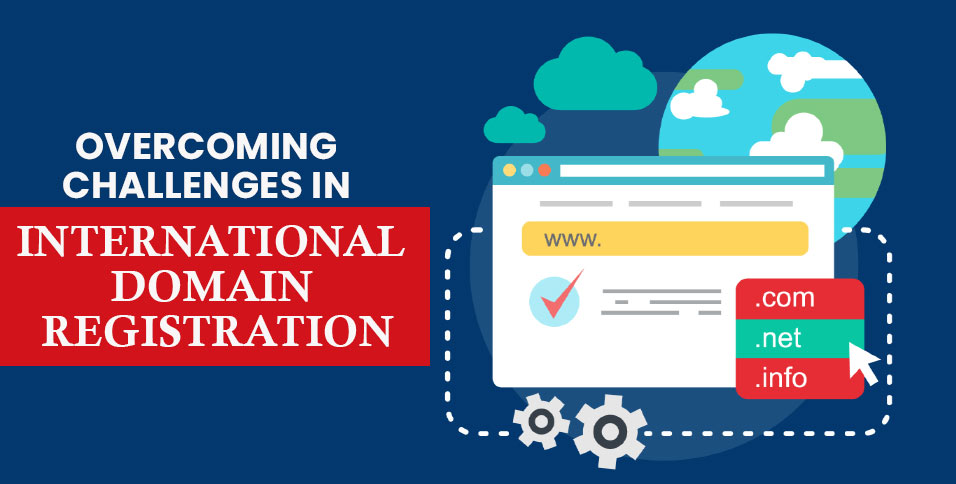Your business has grown enormously since you founded it.
You feel like a happy parent watching your baby grow. But right now, that business is just a teenager. To help it grow further – and reach its full potential – you need to spread its wings and start selling in overseas territories.
Hence, you need international domain registration and a guide on how to set up a domain.
But before you jump straight into splashing the cash on a host of country code top-level domains (ccTLDs), make sure you’re aware of the challenges you might face beforehand.
Challenge 1 – Language Barriers
Language issues are the most obvious challenge you’ll face when registering an international domain, especially if you’re trying to register in a language that doesn’t use the Latin alphabet. The reason being, all domains are based on the ASCII standard – a set of characters that are universally recognized and used across the web.
That’s a problem for those who use languages that don’t fall within this standard – such as Japanese or Chinese – because the characters they use to write aren’t built into ASCII.
The Solution:
People in this situation have two possible solutions.
The first is the simplest – have somebody who understands the language that’s causing you issues to register your domain on your behalf. For some, that might involve hiring a translator, especially if they then want to go on to create a full website in an unfamiliar language. Others may go a different route, such as using an international domain name registrar to help them find the right domain.
Alternatively, you can register an Internationalized Domain Name (IDN). These allow web users to create domain names using various scripts – such as Arabic or Chinese – with the IDN then encoding that script into Unicode, which is compatible with the ASCII standard.
Challenge 2 – Regulatory Issues
ccTLDs come with a unique challenge compared to generic top-level domains (gTLDs):
They’re overseen by the country of origin, rather than ICANN.
That can create several complications, particularly when it comes to getting approval for your registration attempt, as each country gets to make its own rules. In some cases, those rules can feel excessive.
Take Brazil as an example.
To register a .br domain, a registrant must have a Brazilian tax identification number, limiting the registrant group to three pools – residents, citizens, and legal entities in Brazil.
The Solution:
While these types of regulations may make you feel like you have to up sticks and move to the country in question – and even become a citizen in Brazil’s case – there is a simpler solution:
Use a trustee service.
These services – such as the version offered by Nominus.com – see the trustee essentially act as a representative of you or your business in the country in which you want to register your domain. The trustee handles the legal obligation by maintaining an appropriate entity within the country, allowing them to apply for ccTLDs on your behalf.
Challenge 3 – Domain Disputes
Disputes over domain names can arise for several reasons, with the most common being trademarks.
Why?
A trademark you own in the United States doesn’t transfer over to international territories – each has its own trademarking system. So, you might enter into a dispute if you register a ccTLD that infringes on somebody else’s trademark. Alternatively – if you’ve gotten ahead of the game and registered a trademark before a domain – you might raise the dispute if somebody is using your trademarked material.
Either way, you need a resolution before you can build your website.
The Solution:
This is where things get tricky – each international territory that has a ccTLD can also set its own rules for handling disputes.
On the plus side, 42 countries have signed up for WIPO’s “ccTLD Program,” which aims to create unified dispute resolution standards that apply to all ccTLDs. However, that program only covers about a quarter of international domains. You’ll likely have to contact the ccTLD administrators in the country in which the dispute arises – perhaps through your registrar – to move forward with a dispute.
Confront Challenges Early
As you can see, rushing into a domain purchase before doing a little research can be hazardous – disputes can arise and you may have to deal with a language barrier. So, the takeaway from this article is simple:
Know what you’re getting into beforehand.
Research the organization that handles ccTLDs in your desired country, particularly in terms of their registration requirements and dispute-handling mechanisms.
Also Read: Global Reach on TikTok: Strategies for Overcoming Language and Cultural Barriers














